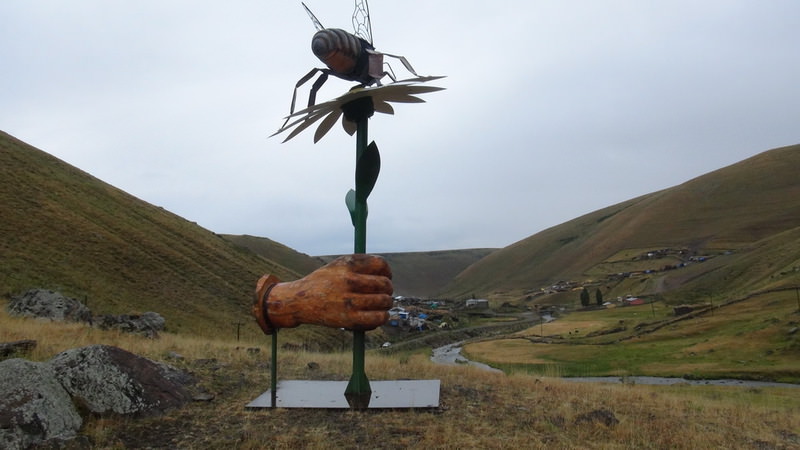Bees flock to sculpture, produce 5kg of honey

The "Caucasian Bee Sculpture," which was made from a 460-year-old pine tree by Yüzel Üzeyir, has been flocked to by bees, and has provided five kilograms of honey. The honey will be sold through an auction.Residing in Doyumlu Village, 45 kilometers from the province of Kars, Üzeyir made a sculpture from a 460-year-old pine tree and named it the "Caucasian Bee Sculpture." The sculpture features a hand holding a flower at the bottom, an endemic plant at the top and a queen bee in the middle. Üzeyir used iron to build the main frame of the sculpture and the daisy on which the wooden queen bee nests. Two colonies of Caucasian bees settled inside the wooden queen bee sculpture and managed to produce five kilograms of honey. Üzeyir earns a living from bee culture. He said that his artwork brings psychology, ecology and biology to the forefront while displaying the negative effects of the wars on earth and the environment along with the longing for peace and the positive atmosphere created by endemic plants. He said that his work is one of a kind in the world as he brings production together with art. Highlighting that he used honey as a metaphor for the production of mankind and nature, Üzeyir said that he worked on the sculpture for a year. "I hung boards featuring verses of the Quran as well as the Bible for local and international tourists who come here to see the sculpture. Where I live is covered with plants including endemic plants. Besides being a historical place, our village is home to Caucasian bees," said Üzeyir. He said that he decided to take action in order to draw attention to his village, which was home to various civilizations as well as Caucasian bees. "The aim of my artwork is to increase recognition of Caucasian bees," Üzeyir added.He said bees do not only help hundreds of plants to reproduce but also provide honey to humans as well as animals. He said, "Due to ongoing wars, nature and human lives are under threat."Üzeyir also offered insights into his project. "There are two colonies inside of this sculpture. One of them is located on the chest of the bee sculpture while the other is in its head. Hence, bees are able to continue producing honey both at the top and the bottom of the sculpture." Üzeyir said that they will put the honey that is produced by the Caucasian bees up for auction on Sept. 20. "This honey is a product of higher locations. Although Anzer honey is famous, honey of Kars is more precious than Anzer honey," he concluded.
Last Update: August 30, 2015 22:30
